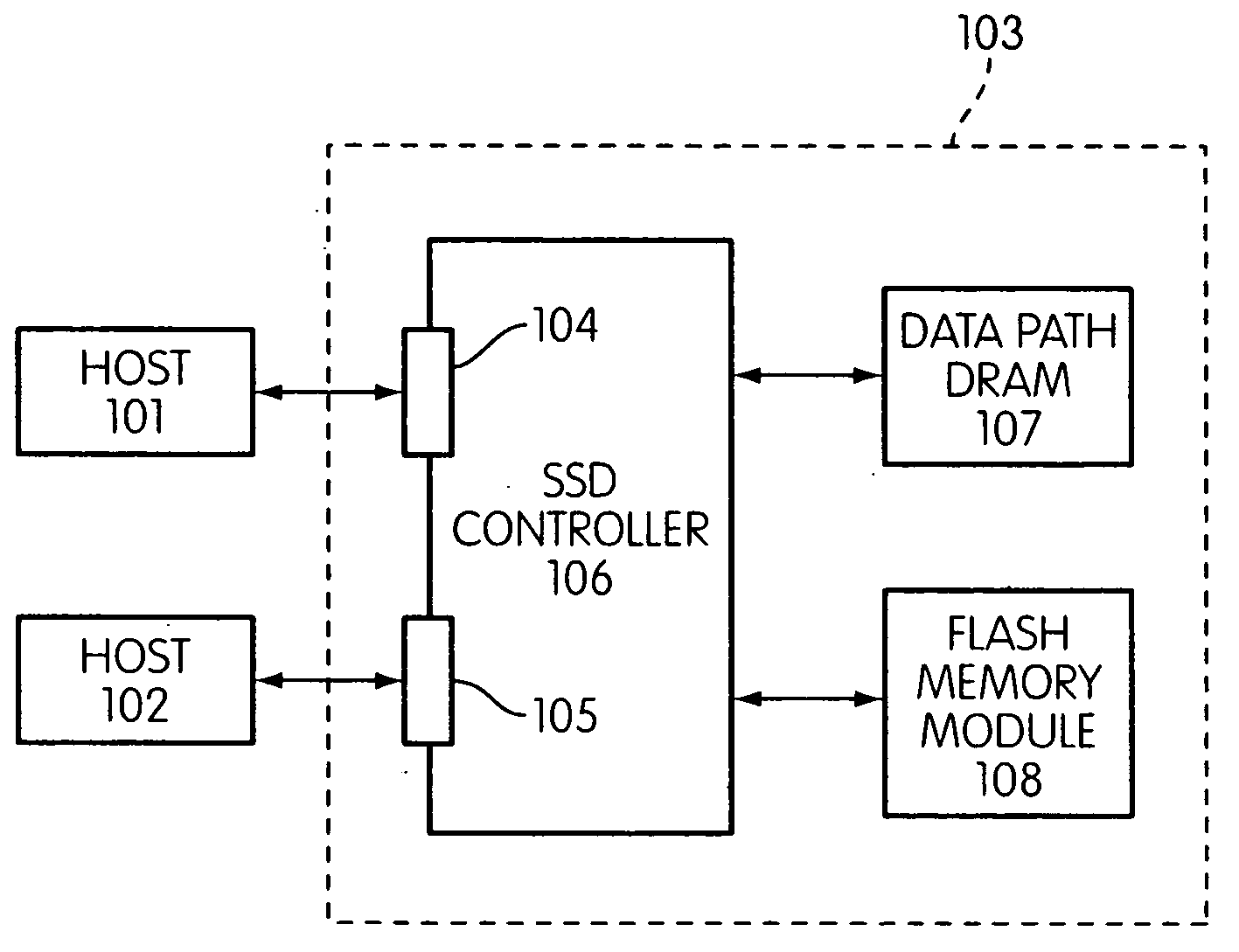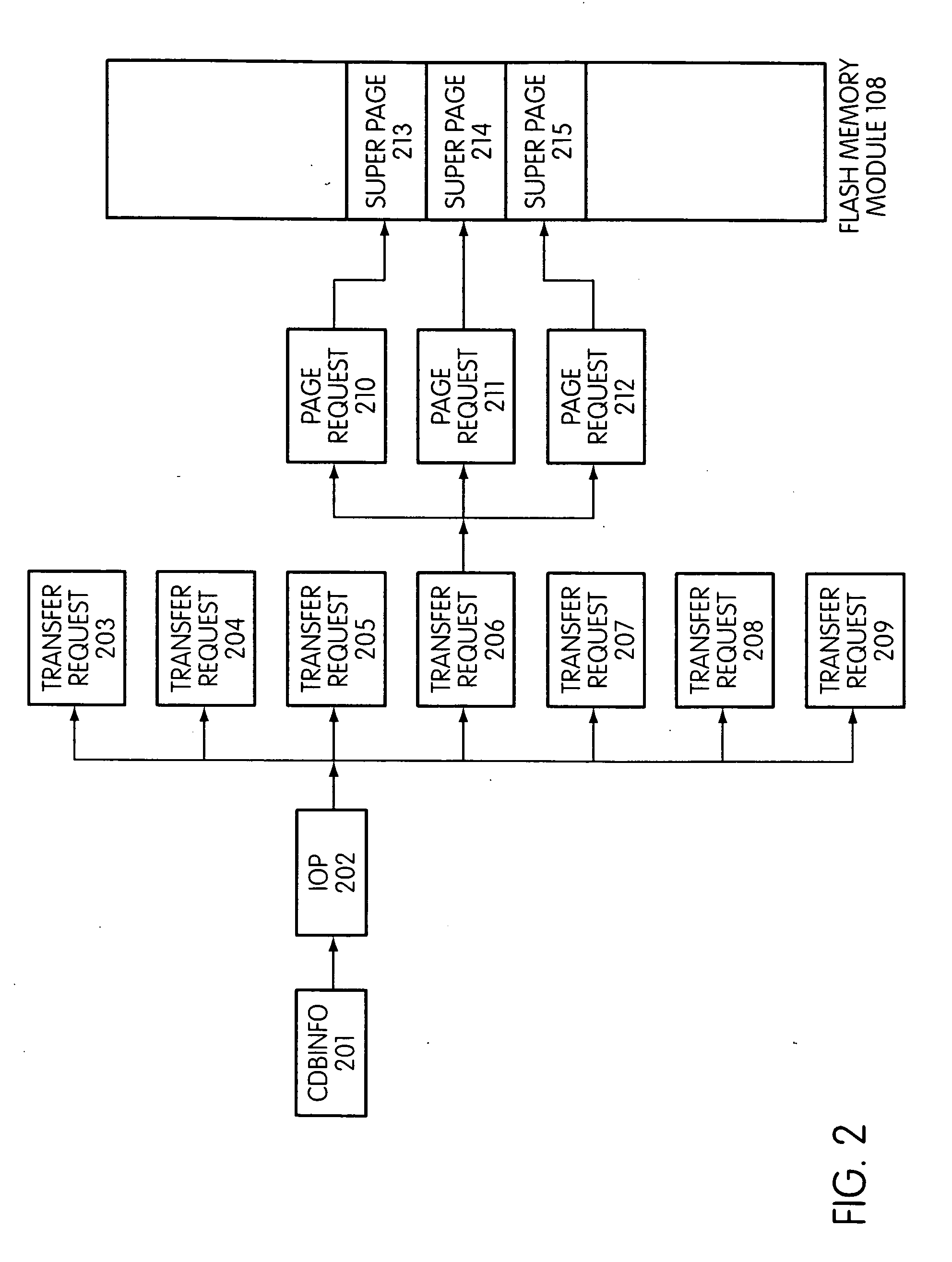Metadata rebuild in a flash memory controller following a loss of power
a flash memory controller and power loss technology, applied in the field of data storage, can solve the problems of reducing the effective and usable capacity of each drive to as low as 12 gb per drive, affecting the performance of the flash memory controller, so as to achieve the effect of maximizing the use of the host, reducing the cost of operation, and effectively masking the write latencies inherent in the hardwar
- Summary
- Abstract
- Description
- Claims
- Application Information
AI Technical Summary
Benefits of technology
Problems solved by technology
Method used
Image
Examples
Embodiment Construction
I. Overview.
[0072]A. System Overview.
[0073]In the currently preferred embodiment, the system described herein is designed to operate with various enterprise-level mass storage protocols, including SAS (“Serial Attached SCSI”), FC (“Fibre Channel”) and FC-AL (“Fibre Channel Arbitrated Loop), all of which are based on the Small Computer Systems Interface (“SCSI”), and Serial ATA (“SATA”) protocols. These protocols are highly familiar to those of ordinary skill in the art, and will not be further described herein. Except where particular protocols are called out, the systems and methods disclosed herein do not depend on the particular protocol being used and are designed to operate correctly with all of them. Moreover, these systems and methods may be adapted for use with other similar protocols, either currently in use or not yet developed, including protocols designed for enterprise-level applications as well as protocols designed for other applications, such as end-user.
[0074]As a m...
PUM
 Login to View More
Login to View More Abstract
Description
Claims
Application Information
 Login to View More
Login to View More - R&D
- Intellectual Property
- Life Sciences
- Materials
- Tech Scout
- Unparalleled Data Quality
- Higher Quality Content
- 60% Fewer Hallucinations
Browse by: Latest US Patents, China's latest patents, Technical Efficacy Thesaurus, Application Domain, Technology Topic, Popular Technical Reports.
© 2025 PatSnap. All rights reserved.Legal|Privacy policy|Modern Slavery Act Transparency Statement|Sitemap|About US| Contact US: help@patsnap.com



